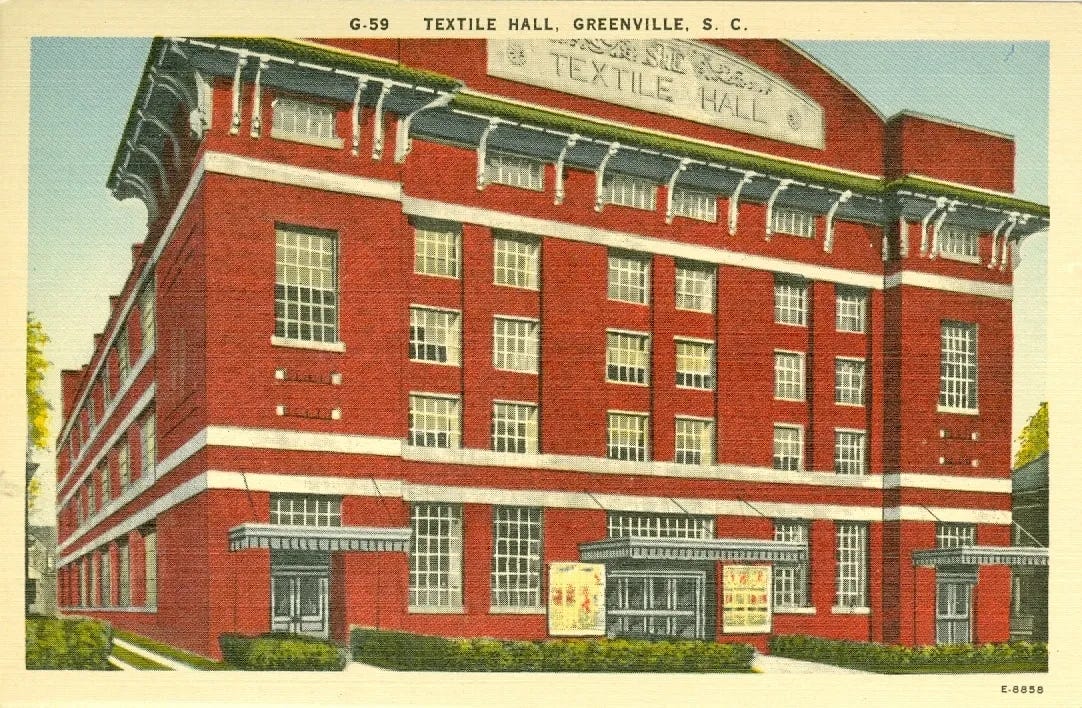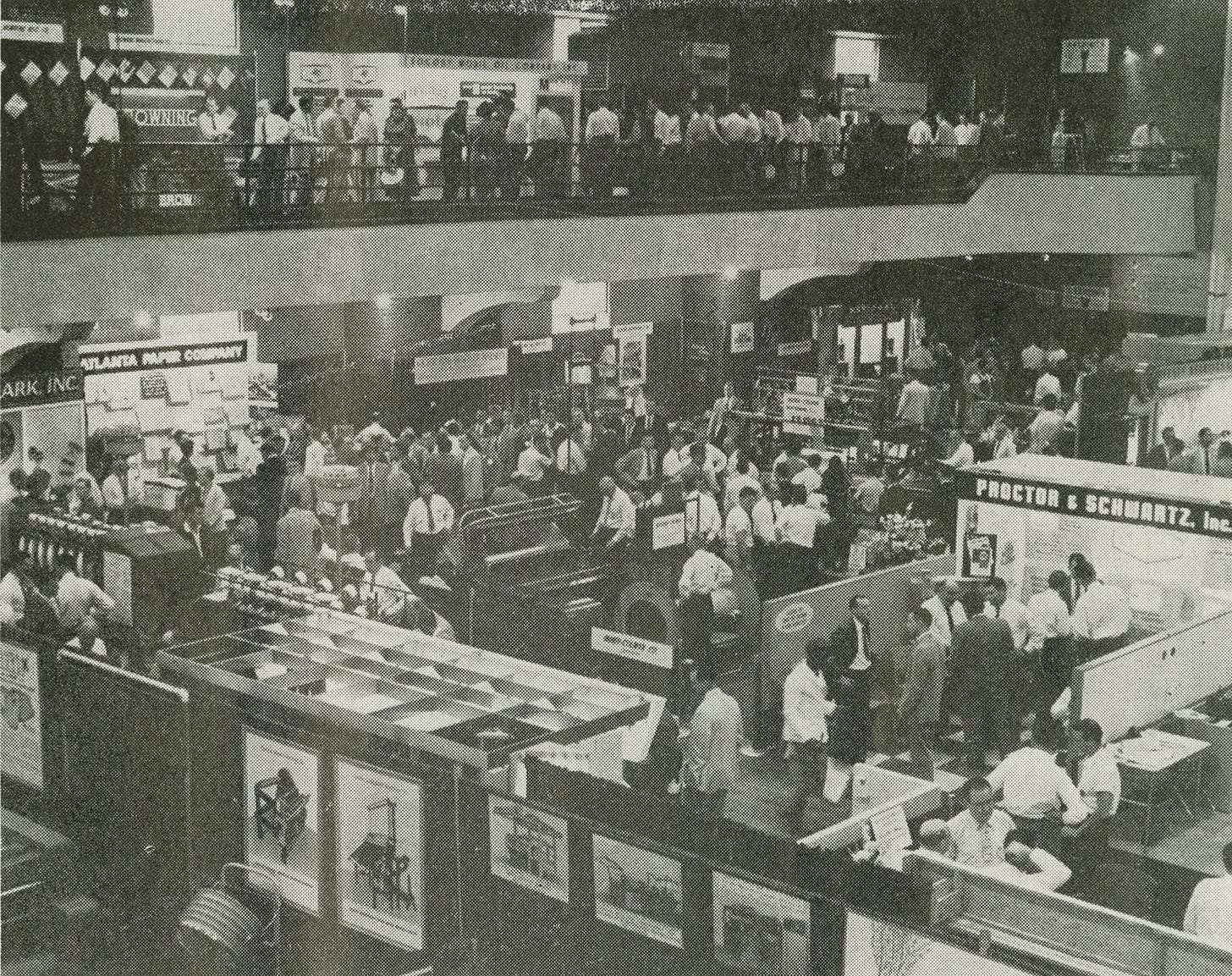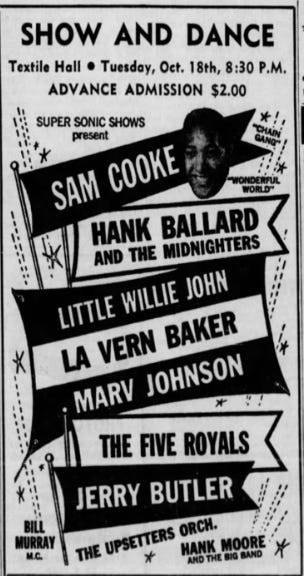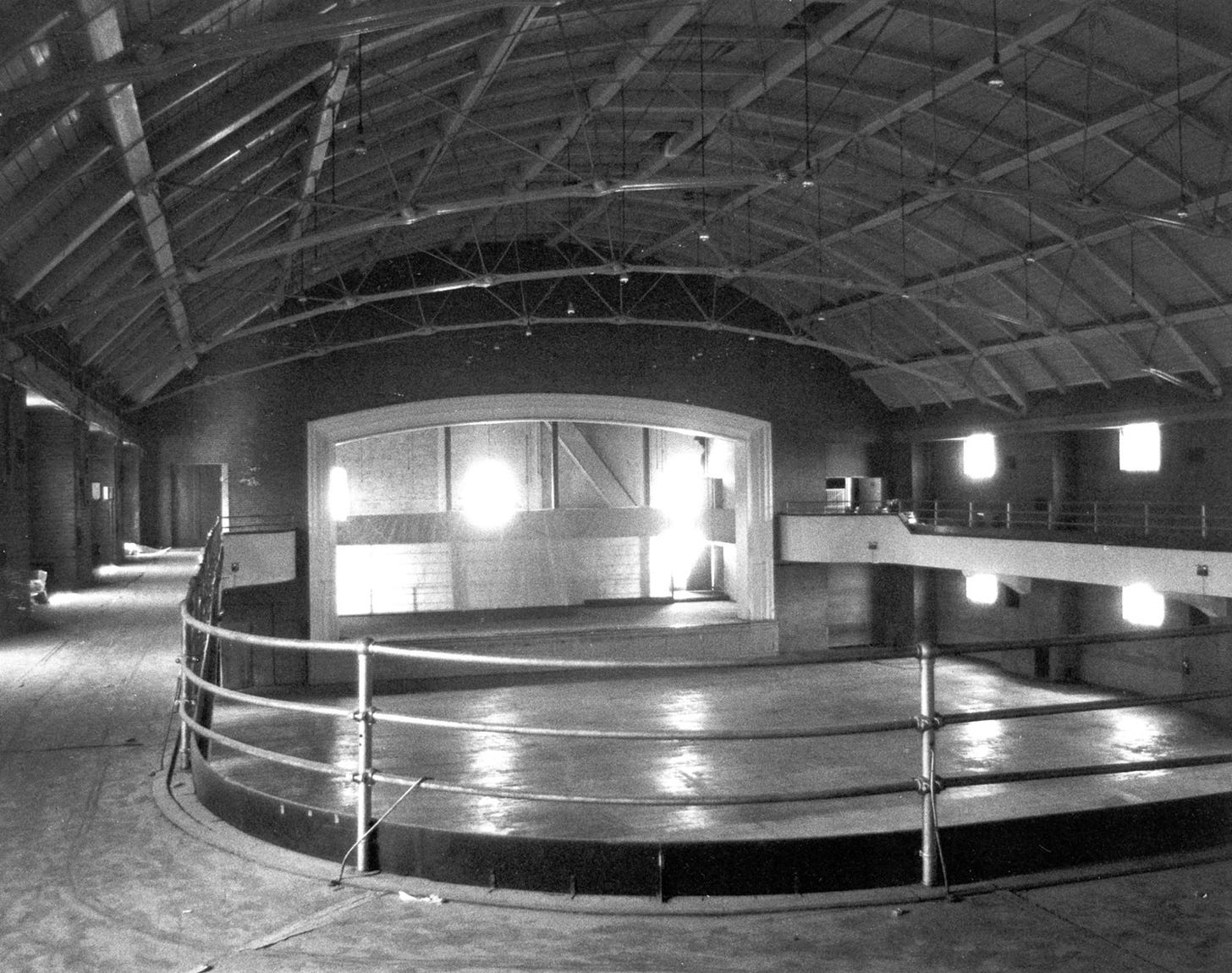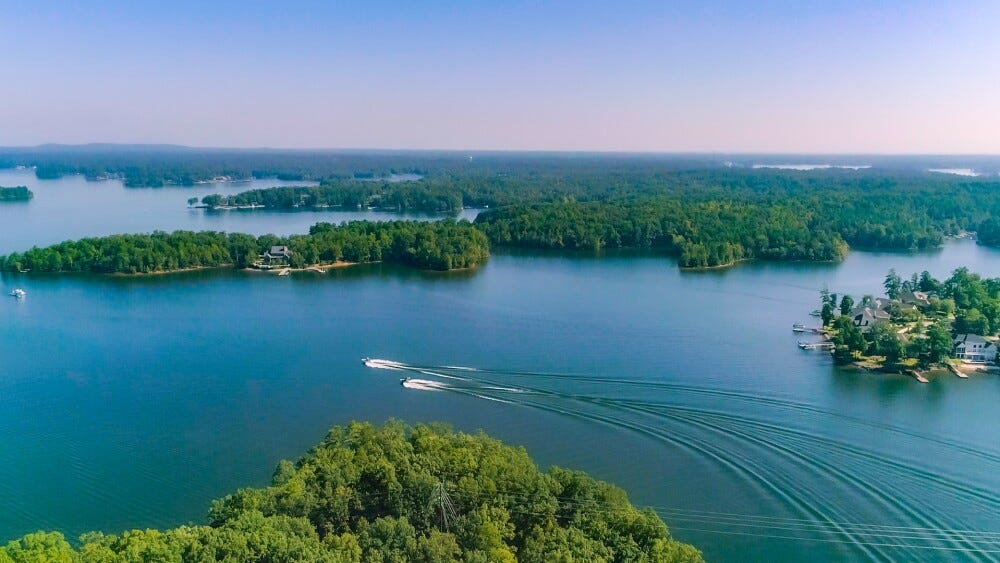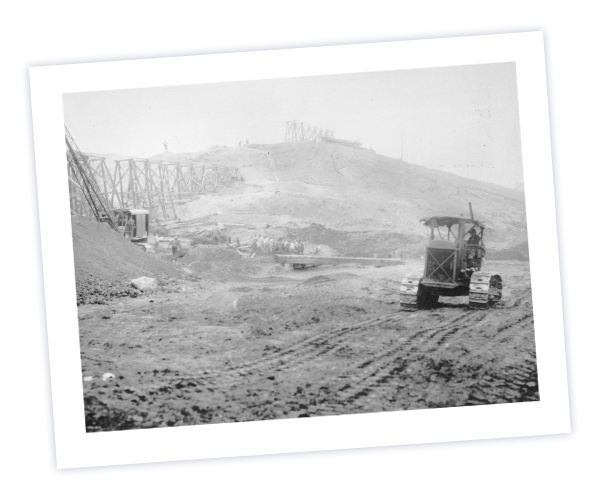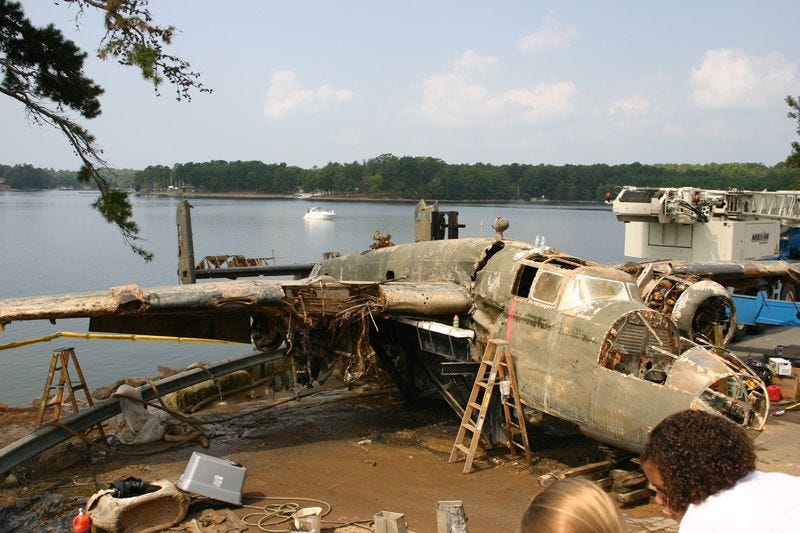#41: Textile capital of the world, Saluda Dam, and the Family History Club
For South Carolina history lovers far and wide! Enjoy weekly SC history and upcoming SC historical events
Dear reader,
Welcome to Newsletter #41 of The South Carolina History Newsletter! I’m so happy you’re here.
I’d like to give a special welcome to our new subscribers — we have a big group today! We have officially crossed the 250 follower mark, and I couldn’t be more grateful! Thank y’all so much for supporting the newsletter.
plamotte
harrypreston
lelimi
calan.piercy
jenniferdukepirtle
vivitaylor
dpmil
laurabullard6
janebreeden5
cathymac1789
Ppegcrockett
ardunsmore
gblackmon7
clintonfamily8
cbcooney
cizmarichh
aubie94
jbl7mbsc
quoridor12
glennadeane
gprblack
nonikarinv
deedoll_22
mtalewine
johnmmoloney5
owenwestover
rachaellynette
tcox
FirstCorps
bronbeach@
sthmlh
carolmcphillips
lhodge
larisasmyrnow
jonesLa
mahilia19
mdmaness
melloyd
csimpson
csgoforth
maryellen
maryrobidoux
cudirtfrog
rousselcrew
carsonbaconpenney
rod0520w
marionwld
jentw1
phillipzellner
asnllyt
wicki00
Huger2ndsc
pollyrags1985
mstinnett
sfarris
I hope you enjoy today’s newsletter, and as always, please feel free to reply to this email with your ideas and suggestions on South Carolina history you’d like to learn more about. I’m only a click away.
Additionally, please join us & keep the conversation going by becoming a member of our SC History Newsletter Facebook Community here! I can’t wait to meet you.
And now, let’s learn some South Carolina history!
Yours truly,
Kate
(Writing from Greenville, SC)
➳ Featured SC History Event
Please enjoy our featured SC History Event below, and click here to visit my SC History Events Calendar that organizes all the upcoming SC history events I have discovered. Please let me know if you’d like to add an event to the calendar! Reply to this email or send me a note at schistorynewsletter@gmail.com.
Thursday, March 28th at 4:00 pm | “Family History Club” | Hughes Main Library | Greenville, SC | FREE and open to the public
“Create a family tree, discover new records to further your research, and connect with other genealogy enthusiasts!”
➳ SC History Fun Facts
I.
Did you know that Greenville, SC once called itself the “Textile Capital of the World”?
The textile industry in America started in early New England, and was made successful in the early 1800s by merchants like Francis Cabot Lowell, who created the first textile factories in the United States in what would become known as Lowell, Massachusetts. By 1840, the factories in Lowell employed “more than 8,000 textile workers, commonly known as mill girls or factory girls.” These factory girls, usually single women, not only worked in the mills, but also lived in the mills in corporate-run boarding houses.
As the mill industry blossomed up north, some New England manufacturers saw potential for textile mills in the South Carolina Piedmont region along the backcountry rivers — and a handful of small mills were built there after 1814. Most of the antebellum South Carolina textile mills remained small. And like the Lowell mills, they would employ “mostly white women” as well as children from the surrounding countryside. The exception to this was William Gregg’s Graniteville factory, where he created an entire industrial community based on the “mill village model” of Francis Cabot Lowell and his mills in Lowell, Massachusetts.
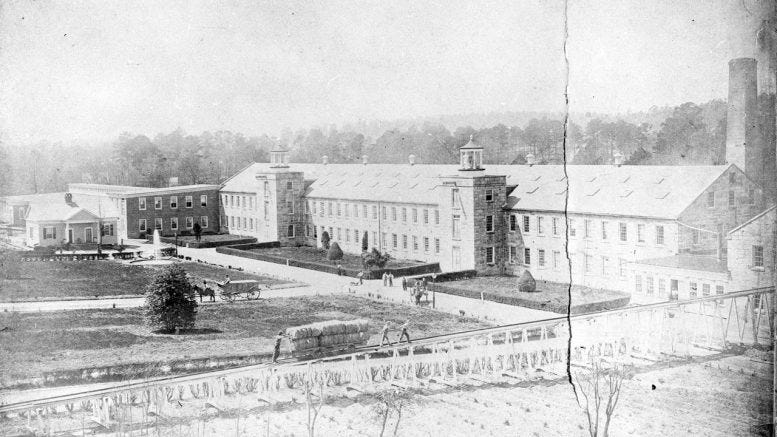
The textile industry soon became the “most significant early industry to take root in the upcountry and Piedmont regions of South Carolina” and would remain its dominant industry for over 100 years. The end of slavery after the Civil War, Northern investment, and an increasing shift to cotton by small farmers were all factors that contributed to the growth of the textile industry. Additionally, the construction of new rail lines reduced transportation costs. By the early twentieth century, “mill villages dotted the landscape of the Piedmont and upcountry.”
Although many praised the the textile industry for bringing progress and jobs to South Carolina, the factories introduced some of less positive effects of industrialization as well. Mill owners employed white labor, often women and children, to work 60+ hours per week. Company towns controlled much of the workers’ lives, and wages remained low compared to factory workers in the North.
By the 1920s, South Carolina ranked “second only to Massachusetts in textile production” and Greenville was central to the industry. With Greenville’s industrial star on the rise, in 1914, the city won a bid with the Southern Textile Association to host the first textile machinery trade fair in the South. The Southern Textile Exposition of 1915 was first held in “borrowed warehouses” but the event proved so successful that the organizers raised enough money to build a permanent exhibition space, Textile Hall, on West Washington Street in downtown Greenville. Textile Hall was completed before the second exposition in 1917.
Thereafter, Greenville began to advertise itself as the "Textile Capital of the World” and Textile Hall became “the center of Greenville life.” Historian Judy Bainbridge wrote in a Greenville News Article The rise and fall of Greenville's Textile Hall:
Automobile shows, teachers’ conventions, revivalists, lecturers, opera singers, bands, traveling musical comedies —even dancer Anna Pavlova — entertained in its 4,000 seat auditorium. Dinners, pageants, dances, concerts, movies (including Cecil B. DeMille’s Ten Commandments) were held there. It hosted Greenville and Parker High School graduations and basketball games, Furman’s basketball team, Golden Gloves tournaments and wrestling matches as well as the annual Southern Piedmont Textile Basketball Tournament.
I even found this wonderful poster from 1960 when Sam Cooke, “the King of Soul,” performed in Textile Hall:
By 1962, The Southern Textile Exposition became so popular that Textile Hall — even with “9 annexes and additional leased space” — proved inadequate to host the biannual event. The organizers built a larger building adjoining the Greenville Downtown Airport on the new U.S. Route 29-Bypass. In 1969, the Exposition “joined with the American Textile Machinery Association to sponsor the American Textile Machinery Exhibition-International, the largest textile machinery show ever held in the United States.”
By the end of the 20th century, the textile industry of Greenville was in full decline. Low wages and competition from countries such as China, India, and Brazil dramatically reduced textile production in the United States, especially in the Southeast. The original Textile Hall of Greenville became “neglected and dilapidated” and sadly, was demolished in 1992. The Southern Textile Exposition was held in Greenville at the Palmetto Expo Center for the final time in 2004.
II.
Did you know that the Saluda Dam, which created Lake Murray, was the largest earthen dam in the world when it was completed in 1930?
Located just outside of Columbia, Lake Murray is not a natural lake, but rather, a man-made reservoir. It is approximately 50,000 acres and has roughly 650 mi of shoreline. The lake is a recreational attraction, with fishing and boating being popular activities — and is also a source of hydroelectric power for the region. At the time when the lake was finished, it was one of the country’s largest man-made reservoirs, and the Saluda Dam (officially the Dreher Shoals Dam) was an engineering marvel at the time of its construction. The dam, using the native red clay soil and bedrock, was the largest earthen dam in the world when it was completed in 1930.
By the turn of the 20th century, there had been interest in water power generation on the Saluda River for more than a hundred years. As the demand for electricity in the developing Southern United States increased, it became apparent that harnessing the flow of large rivers such as the Saluda was imminent and necessary.
A local gentleman named Thomas Clay Williams had a grand vision to bringing hydroelectricity to the rivers in the Midlands. While local developers scoffed at his ideas, a prominent American engineer saw value in his vision. William S. Murray was a highly regarded engineer who had extensive experience in electric power systems and generation. He had been the chief engineer on the project to electrify the New Haven Railroad out of New York City, among other large-scale engineering projects. In 1923, Murray partnered with Thomas Clay Williams and became chief engineer of the The Saluda Dam project. Lake Murray would eventually be named in his honor.
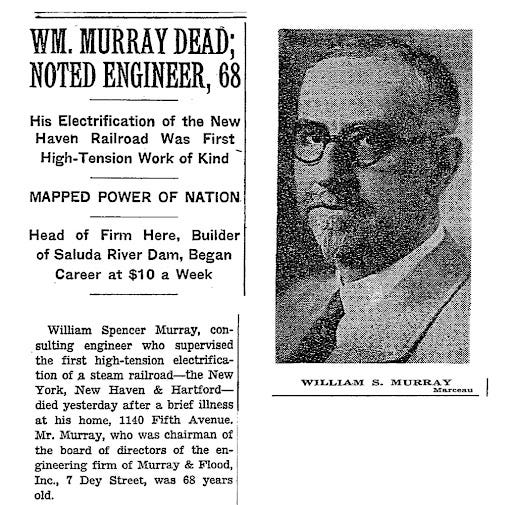
On July 8, 1927, the Federal Power Commission granted a license to Lexington Water Power Company for construction of a dam and powerhouse at Dreher Shoals. Immediately, the company went to work on securing the land needed for construction of the lake and dam.
The reservoir and its protective margins covered an area of about 65,000 acres. To secure this land, it was necessary to purchase a total of approximately 100,000 acres of which approximately 75% was woodland. 1,100 parcels of land needed to be purchased, on which approximately 5,000 people lived. The work of acquiring the land was difficult on many levels, including the fact that many “properties had passed from fathers to sons with no legal transfer, with certain lands conveyed under crown grants from King James II of England, and other tracts were heir properties or had no written records.”
The lands acquired for the dam sold between $15 and $45 an acre. To make room for the lake, nearly a dozen communities had to be abandoned, including Derrick, Pine Ridge, Selwood, Wessinger, Cantsville, Leaphart, Savilla, Boyleston, Lorena, Holly’s Ferry and Lorick’s Ferry. Furthermore, arrangements had to be made for the removal of 3 churches, 6 schools, and 193 graveyards containing 2,323 graves.
Once the lands were acquired, the work of clearing the site for the dam and reservoir started in April 1927 and was completed in 1928. The woodland would be cleared to the 360-foot elevation line, which would later become the high-water mark. 2,000 men were employed in the project, with 37 saw mills in full operation. Approximately 100 million board feet of lumber was manufactured, and practically all of the lumber required for construction of the dam was supplied from the clearing operation.
At a cost of $20.1 million, the dam is “1.5 miles long, 375 feet thick, 208 feet high and covers 99 acres.” The four spill gates are each 37.5 feet long by 25 feet wide. Between 1943 and 1946, “two additional gates were added to the spillway, and the dam was strengthened by raising the crest 3 feet. The spillways were constructed to handle any flood situation where the lake’s level rose above the 360’ mark.”
On August 31, 1929, the reservoir began filling with water, and on December 1, 1930, at 7 a.m. the first electric power, 10,000 kilowatts, was delivered at Lake Murray. Today, Lake Murray stores 763 billion gallons of water!
I would be remiss if I didn’t mention that in the 1940s, something bizarre happened on Lake Murray…
A number of B-25 Mitchell bombers (flying out of nearby Columbia) crashed into the lake during training exercises for World War II. A few were able to be recovered, but 3 remained underwater until September 2005, when the “Lake Murray B-25 Rescue Project” salvaged the aircraft from the bottom of the lake. The remains of the aircraft were moved to the Southern Museum of Flight in Birmingham, Alabama for conservation and museum display.
From the Lake Murray Country Website:
What is under the lake has been a fascination for many people. There are nearly a dozen communities, thousands of graves, the Wise Ferry Bridge, bomber airplanes, pipeline, railroad tank cars, an old rock house, homes, boats, and bomb fragments.
➳ Quote from an SC historical figure
I.
“An enormous amount of work has to be done at the dam on the Saluda, but the company is working on a capital of $300,000 and its financial strength and backing is more than equal to any emergency. Tons upon tons of crushed rock and concrete will be packed into the big dam, which is to be 38 feet high and extend for more than 500 feet. The Saluda river will be completely block and for 7 miles, water will be forced back up the stream forming a sheet of water between 15-20 miles in circumference. This lake will be cleared of all vegetable growth, forming one of the handsomest bodies of fresh water in the State.”
—Article from The Greenville News, 1905
Sources used in today’s newsletter:
I always want to improve my work. Answer the poll below to give me your review of today’s newsletter. I also welcome your suggestions for new content! Simply reply to this email with your ideas. Thank you!










